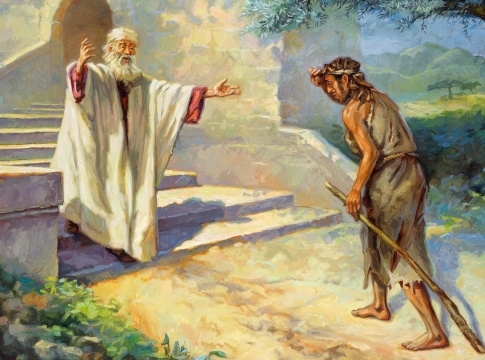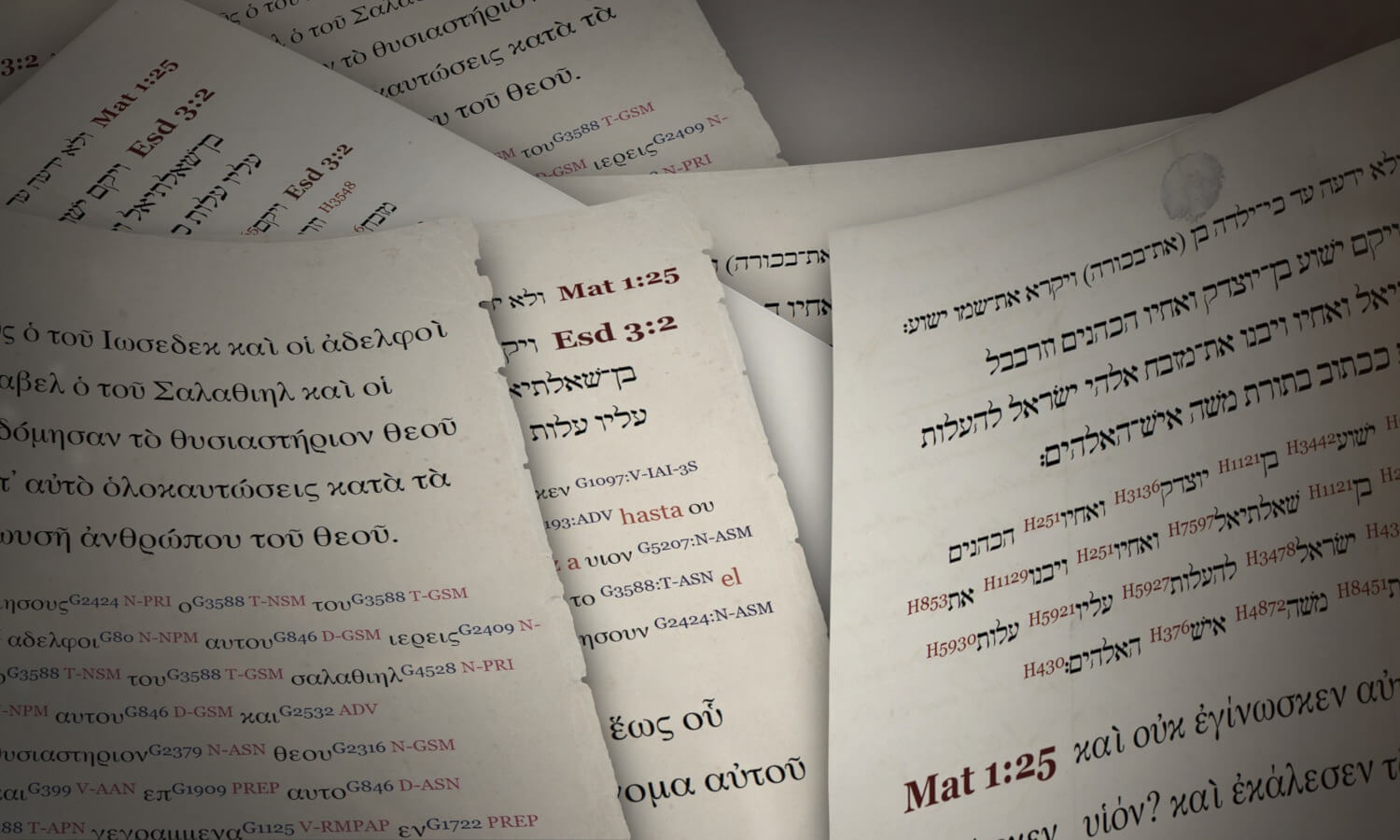
The entire Bible is now available in more than 700 languages, and the New Testament is available in another 1500 languages worldwide (for exact numbers, visit Wycliffe Bible Translators’ website). The texts of the Bible as they were originally written down centuries ago are translated into all of these versions. Which language, then, was the Bible first written in? Was it written in Greek, Hebrew, Latin, or English? Unexpectedly, the solution is both more intricate and fascinating. I’ll start by providing some background information.
Table of Contents
- How and when was the Bible first written?
- What language was the Bible first written in?
- The Bible has been translated into numerous languages; when and why?
- When was the Bible first printed?
- Should I read the Bible in its original languages?
How and when was the Bible first written?
Who wrote the Bible?
The Bible is composed of 66 books that were authored by numerous authors over several centuries, as our articles “Who wrote the Bible?” go into greater depth about. and [“Who chose which texts to add to the Bible?”]. There is nothing that Jesus wrote himself. His disciples kept a record of His words and life. But the inspiration for these human authors’ works came from God’s Spirit. Thus, the ultimate and authentic author of all the writings in the Bible is the Lord God. Take a look at our article [“Is the Bible the word of God?”] for additional details.
When was the Bible written?
The books of the Bible are divided into two Testaments. The [Old Testament] spans thousands of years, from the moment of creation to roughly 400 BC, in human history (see this timeline). For certain books, the books themselves tell us when they were written. For instance, the book of Amos is presented as follows:
The comments of Amos, who lived among the shepherds of Tekoa, on what he observed regarding Israel during the reigns of Jeroboam, son of Joash, king of Israel, and Uzziah, king of Judah, two years prior to the earthquake (Amos 1:1).
The prophetic words were recorded, destroyed by the monarch, and then recorded again during the prophet’s lifetime, according to the book of Jeremiah. It is made plain when this occurred in the final book’s introduction:
The words spoken by Jeremiah son of Hilkiah, one of the priests who served in Anathoth, in the land of Benjamin, to whom the Lord spoke during the thirteenth year of Josiah’s reign as king of Judah. It also occurred during the reign of Jehoiakim, the son of Josiah, king of Judah, and lasted until the end of Zedekiah’s eleventh year as king of Judah, and up to Jerusalem’s captivity in the fifth month (Jeremiah 1:1-3).

Moses, who lived around 1400 BC, is primarily credited with writing the first five books of the Bible. The final books were composed circa 400 BC, not long after the Jewish people returned from their banishment. Some of the Old Testament’s books, like the book of Psalms, were written over a longer period of time, or we are unsure of when they were exactly recorded.
The life of Jesus Christ and the early church era are chronicled in the New Testament, which only covers roughly a century. The books that chronicle Jesus’ earthly life, the Gospels, were recorded by firsthand accounts [within decades after the actual occurrences]. The apostles, who were all of Jesus’s contemporaries, wrote the New Testament letters. By the end of the first century AD, the apostle John wrote the remaining books of the Bible.
Where is the original Bible?
First editions of famous books are carefully kept by collectors or displayed in museums. So, where is the first edition of the Bible? Where is the original handwritten version of the various Bible books kept? Unfortunately, we don’t have any originals. The Bible books were written on materials like papyrus, leather and parchment. These materials do not last very long. Therefore, the Bible books were copied by hand to preserve and multiply them. This was a lot of work, and every now and then copyists made a mistake — which would then be corrected or taken over by the next copyist. That way, some small differences developed. Sometimes we can’t be sure which version is original and which one has been changed over the centuries. The vast majority of these variations are just linguistic, they don’t influence the meaning of the text.
Even though the original Bible books have been destroyed, the New Testament alone has about 6,000 extremely old manuscripts that span from the second to the sixteenth century.
Some only cover passages, while others cover entire Bible books. Scholars have been able to determine with great accuracy what the original language of every Bible text was by carefully examining these manuscripts. Read [our article on this topic] for more in-depth details on the question of whether the text of our current Bibles resembles that of the original Bible. Keeping this background knowledge in mind, let’s get to the article’s core query.
What language was the Bible first written in?
The Bible was not written in one language, but three!
The Old Testament is composed of Hebrew text with a few Aramaic verses [1]. Because all languages change with time and because different writers and literal genres employ language differently, there are some small linguistic variations between the first and last books of the Old Testament.
On the other hand, the New Testament was composed in Greek, a totally distinct language. Because of Alexander the Great’s conquests, this was the common tongue in the area around Israel at the time of Jesus. Greek would therefore be a language that many people at that time could understand.
Old Testament Hebrew
It is likely that the Hebrew language utilized in the books of the Old Testament was in use from approximately 1500 BC to 400 BC. Many then began speaking in Aramaic. However, Jews continued to speak Hebrew, particularly for religious purposes. The Hebrew spoken in Israel today is not the same as the Hebrew found in the Bible.
Writing in Hebrew is done from right to left. In the beginning, Hebrew words were solely recorded with their consonants. Vowels were then added as tiny vowel points in, under, or above the letters in numerous manuscripts. Those readers who do not speak Hebrew as their first language will find this extremely useful.
The opening few verses of Genesis as they appear in the majority of contemporary translations [2] (with verse numbers added, etc.) and a passage of text that solely contains consonants are shown below.
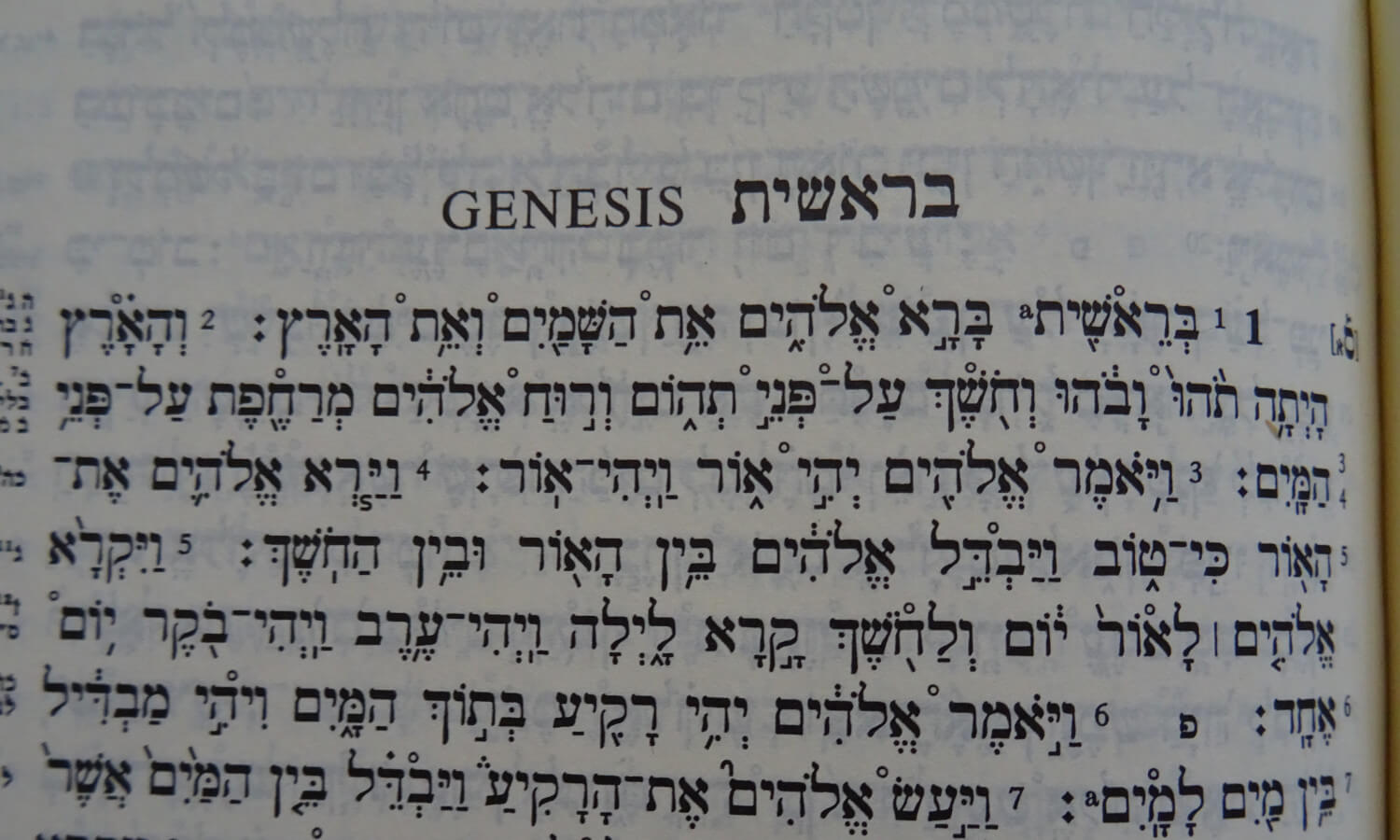
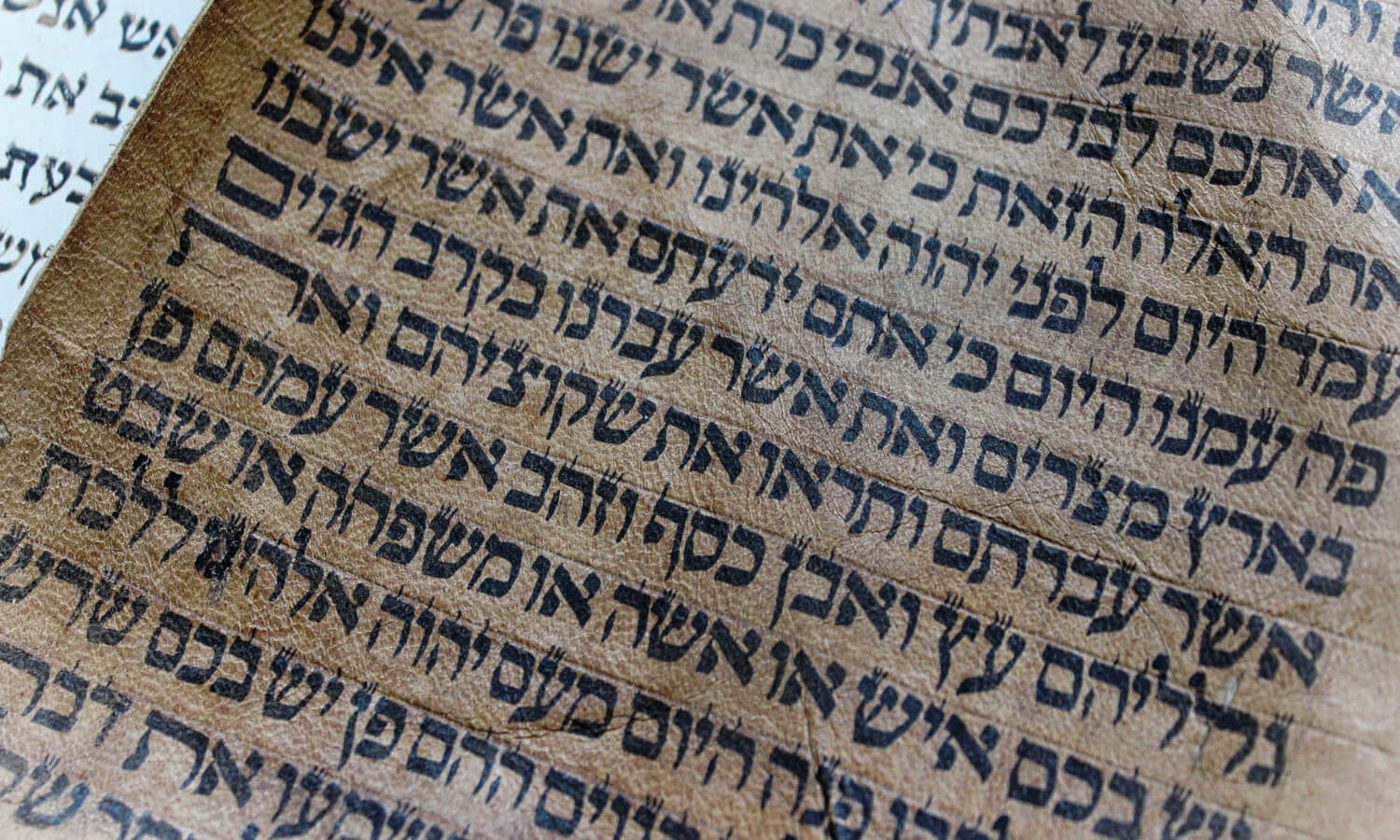
Aramaic
Some text passages in the Old Testament are written in Aramaic, as was previously mentioned. Hebrew and Aramaic are closely related languages that are members of the same family. For example, they both utilize the same alphabet. The official languages of the Assyrian, Babylonian, and Persian empires were Aramaic and Persian. Many Jews adopted Aramaic as their common tongue since these empires ruled over a sizable portion of the world, including Israel (and [sent the majority of its residents into exile]). Jesus conversed in Aramaic as well; for examples, read Mark 5:41, 7:34, 14:36, and 15:34. The quotations from Jesus found in the New Testament are therefore frequently translated from Aramaic into Greek (though it is quite likely that Jesus conversed in Greek with non-Israelite speakers).
Koinè Greek
Greek became the common tongue after Alexander the Great’s vast realm was subjugated. Thus, rather of using Hebrew or Aramaic when the authors of the Bible recorded their stories of Jesus Christ three centuries later, they did so in this language. The word “koinè” was added to indicate that this was not “literary” or “classical” Greek, but rather the common, somewhat simpler Greek spoken by the populace.
According to contemporary translations, these are the opening lines of Luke’s gospel [3].
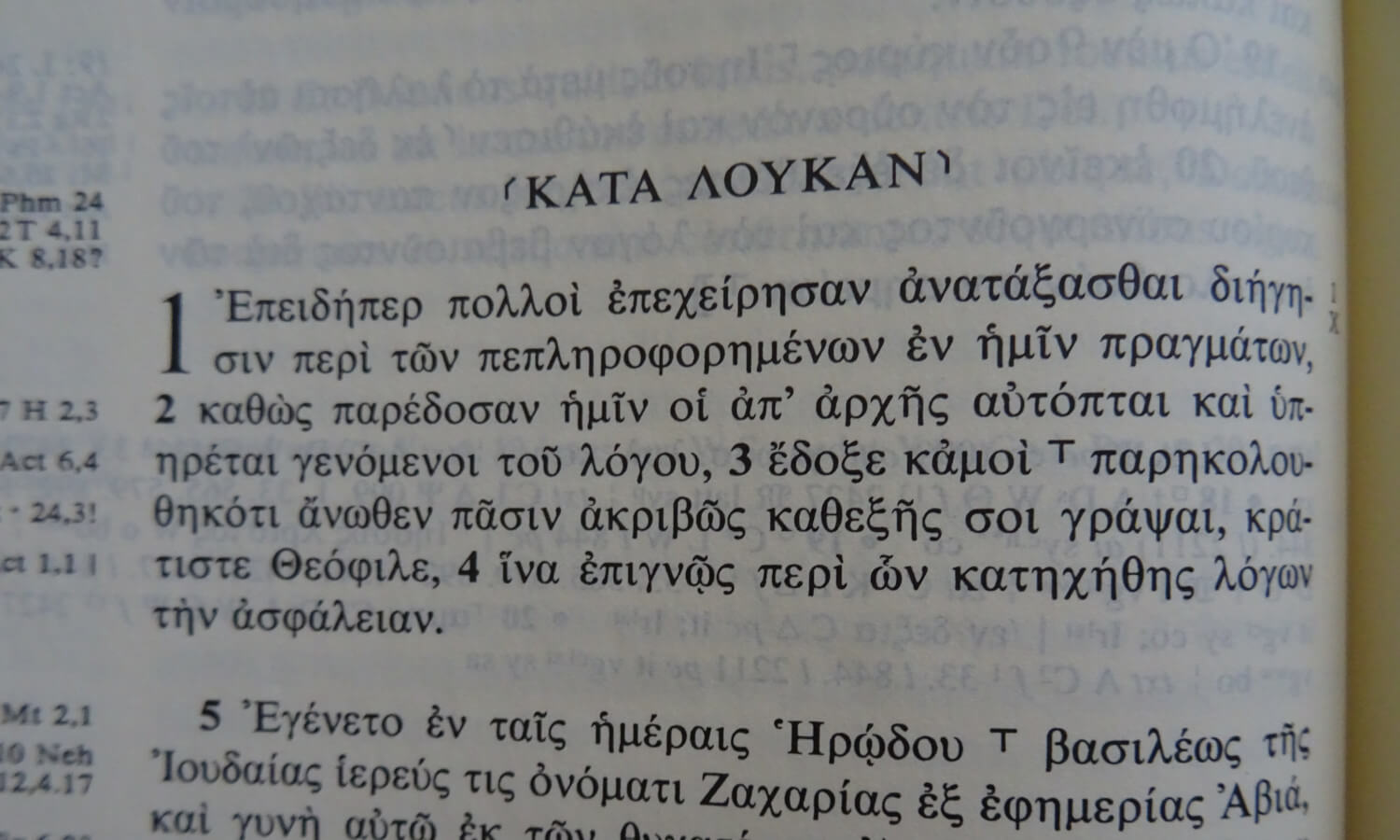
And this is an original fragment of a Greek manuscript. As you can see, there are very few punctuation marks, no spaces, and only capital letters in these earlier manuscripts.
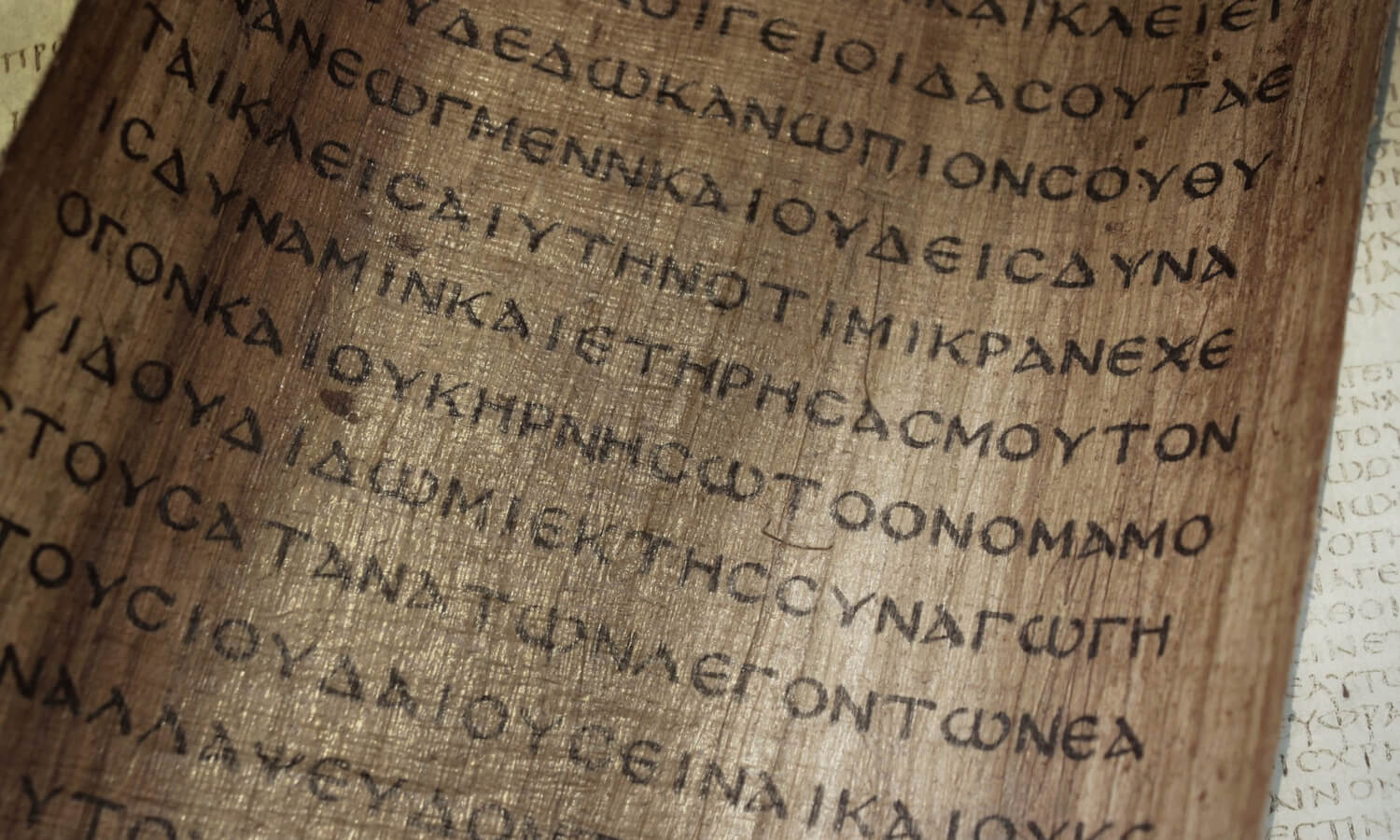
When was the Bible translated into other languages? And why did people translate it?
Aramaic
As previously indicated, Aramaic was used to write some of the final chapters of the Old Testament because it was the language of choice for the exiled Israelites. They also translated ancient Bible works into Aramaic around this time since people were losing their understanding of Old Testament Hebrew. Most of these translations, known as targumim, were delivered by a qualified interpreter. Writing things down was not even considered appropriate at first. However, many Jews later acknowledged the written versions as authentic translations.
Greek
The first five books of the Bible were translated into Greek by 280 BC because some Jews, particularly those who lived outside of Israel, had lost proficiency in Hebrew. The remaining books of the Old Testament came a few years later. This ancient Greek translation is known as LXX (the Roman numeral for 70) or Septuagint (meaning 70). This term derives from the (possibly not entirely true) historical rumor that 70 persons worked on the translation. This Greek version is frequently cited by the authors of the New Testament when they quote the Old Testament.
Latin
A portion of the Bible was translated into Latin as the Roman Empire gained power and Latin spread as a common tongue. We refer to these as the Vetus Latina. Hieronymus translated the entire Bible into Latin in the fifth century AD. Versio Vulgata, which translates to “translation for the common people,” is the name given to this translation. This is the translation of the Bible that has been used in western churches for centuries. Even other translations were outlawed by the church during the Middle Ages. However, as the general public lost understanding of Latin, an increasing number of projects emerged to translate the Bible into the mother tongues of the populace.
Early translations into other languages
There are some extremely old translations of specific books or smaller portions of the Bible in old English, German, and Slavonic, for example, despite the church’s rejection of Bible translations. Translations of these date back to approximately 800 AD. Pope Innocent III outlawed unapproved Bible translations in 1199 AD in an effort to quell heresy. The general trend was to prohibit vernacular translations, though some appear to have been approved later.
The Reformation movement
In the 16th century, the Reformation movement boosted the translation of the complete Bible in many European vernacular languages, since this movement considered it very important that “ordinary people” could read the Bible for themselves without being dependent on any church authorities. This endeavor greatly benefited from the fact that in this period, the printing press was invented and made it possible to produce many affordable copies of the Bible. Until then, only the clergy and the very rich could afford books.
A German Bible translation by Martin Luther was first printed in 1522. Within decades, Luther’s example was followed in other European languages such as Polish, Spanish, Czech, Dutch and English. The Roman Catholic Church strongly opposed these translation efforts since they considered the reading and explanation of the Bible the task of theologians, not lay people, and since they were suspicious that translators also changed the Bible to match their theological point of view. Therefore, many translators used pseudonyms and worked in secret. But they were not always able to escape the church’s sanctions. William Tyndale, for example, was executed before he could even finish his translation work.
Modern translations
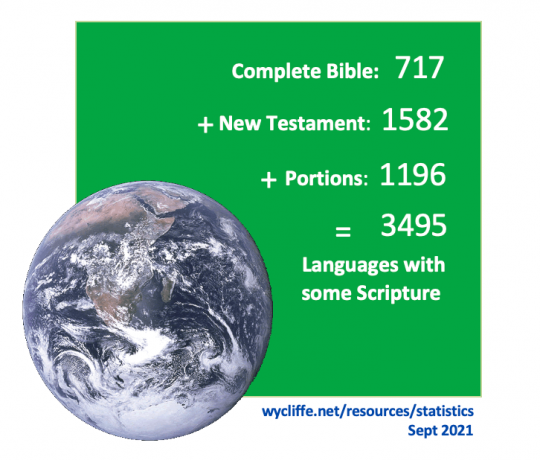 When European missionaries traveled the globe to spread the Gospel, many made translating the Bible into vernacular languages a priority, since they believed that God’s Word is so valuable and powerful that every individual should have access to it in a language they can understand. This goal has not yet been accomplished, but in recent years, technological developments have allowed missionaries and churches worldwide to increase this work dramatically.
When European missionaries traveled the globe to spread the Gospel, many made translating the Bible into vernacular languages a priority, since they believed that God’s Word is so valuable and powerful that every individual should have access to it in a language they can understand. This goal has not yet been accomplished, but in recent years, technological developments have allowed missionaries and churches worldwide to increase this work dramatically.
In order to “provide the Bible in accurate, contemporary translations and formats so that more people around the world will have the opportunity to be transformed by Jesus Christ,” organizations like Wycliffe Bible Translators and the International Bible Society now bring together a number of smaller initiatives (International Bible Society).
When was the Bible first printed?
The printing press was created by German goldsmith Johannes Gutenberg in 1440 AD. His creation significantly increased book production’s speed, quality, and price, especially when combined with advancements in papermaking. The Bible was the first significant book that Gutenberg printed in Latin. Desiderius Erasmus created the first Greek New Testament printed edition in 1516. The first Bible translations into common tongues were also quickly disseminated thanks to the printing machine. Thus, Bibles have been printed ever since the printing press was invented.
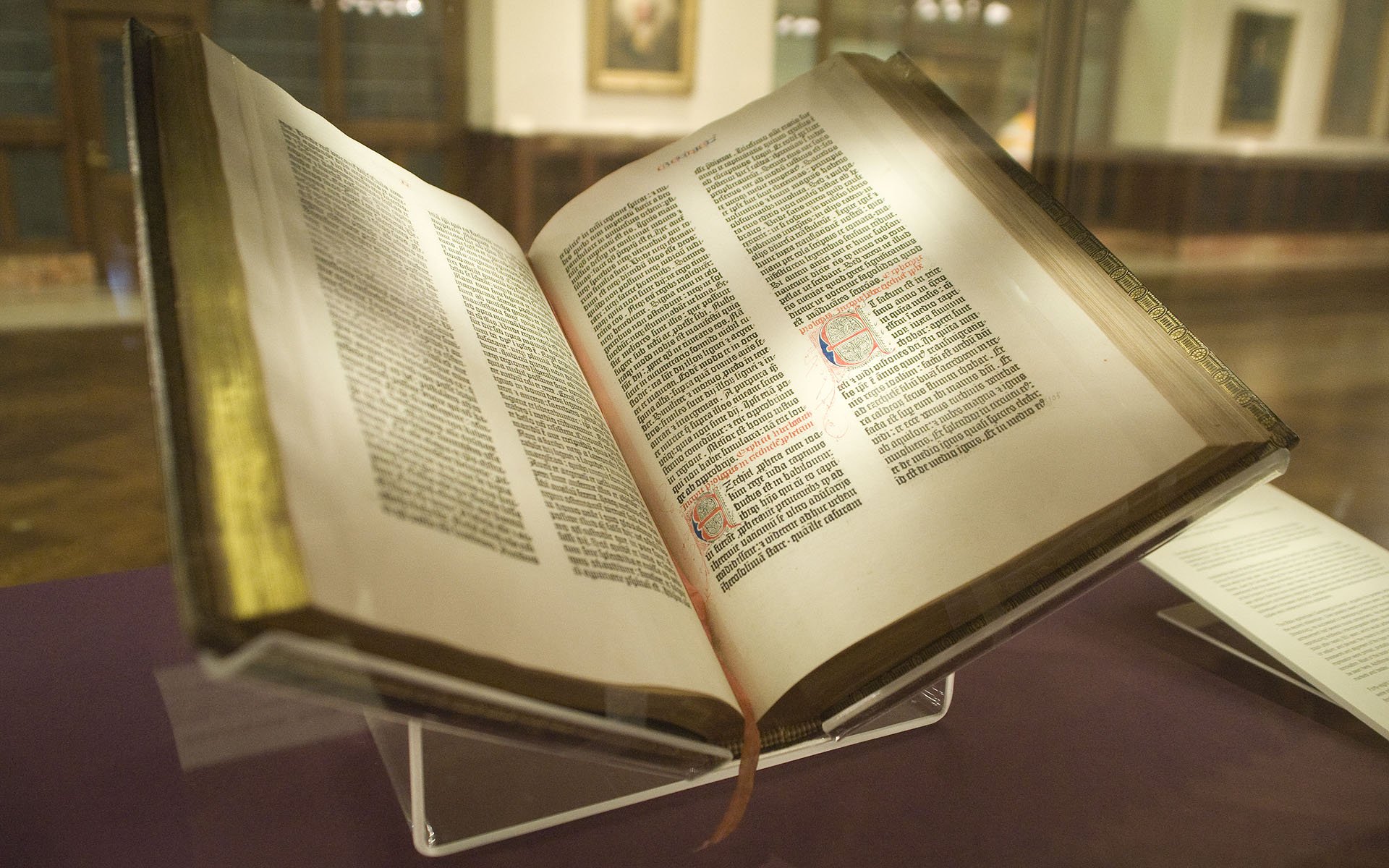
Other formats
The Bible is a book, yet it’s not limited to printed or handwritten versions. Many Bible translations are now available online, making searches simple. The Bible is also available in audio format in numerous languages. More individuals than ever before can now access God’s Word thanks to these innovative media.
Should I read the Bible in its original languages?
These days, a large number of individuals worldwide benefit from Bible translations into easily understood languages. What a great way to obtain God’s Word that is! If you want to go deeper and study the Bible in its original languages, learning Hebrew and Greek is still beneficial, but a good translation is just as much “God’s Word” as the original Hebrew scrolls or Greek manuscripts. To know God and to be saved, you do not have to learn Hebrew and Greek.
God does not favor one human language over another, as evidenced by Jesus’ quotations from the Septuagint, the Greek translation of the Old Testament, and the fact that the New Testament Bible books were written in Greek rather than Hebrew. He had His Word recorded in the languages most familiar to the original audiences, so reading the Bible does not require one to acquire a new or “holy” language. When we consider that God first made the great effort to communicate His eternal, universal truths in human language, this is actually not all that shocking. The translation of the Bible into another human tongue is minuscule in comparison to this!
The Bible is how God has shown Himself to us as people. The Bible was originally written in Hebrew, Aramaic, and Greek thanks to his inspiration, but it has since been translated into several languages. The Bible can be read in any language, but it is crucial that we pay attention to God’s Word because it shows us how to develop a close connection with the Almighty. Do you and He have this kind of relationship?
Notes
[1] These are Ezra 4:7-6:18; 7:12-26; Jeremiah 10:11; Daniel 2:4-7:28
[2] Deutsche Bibelgesellschaft, Stuttgart, 1997, Biblia Hebraica Stuttgartensia (BHS), copyright page 1.
[3] Graece and Latin text Novum Testamentum, copyright 1984 Deutsche Bibelgesellschaft, Stuttgart, p. 150




